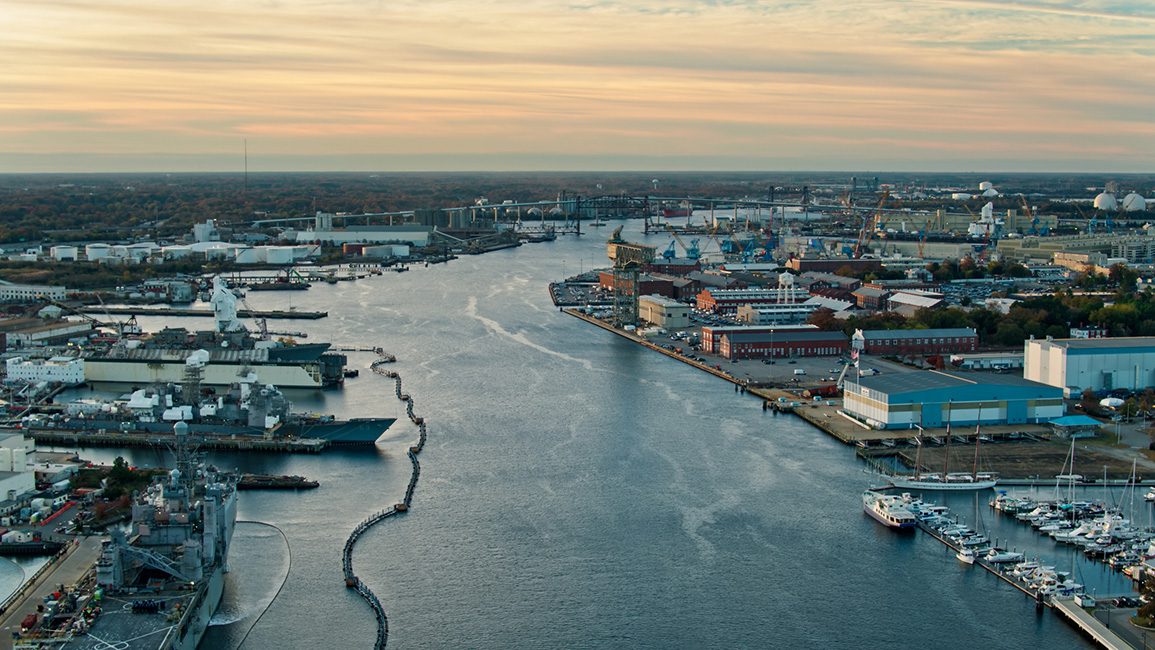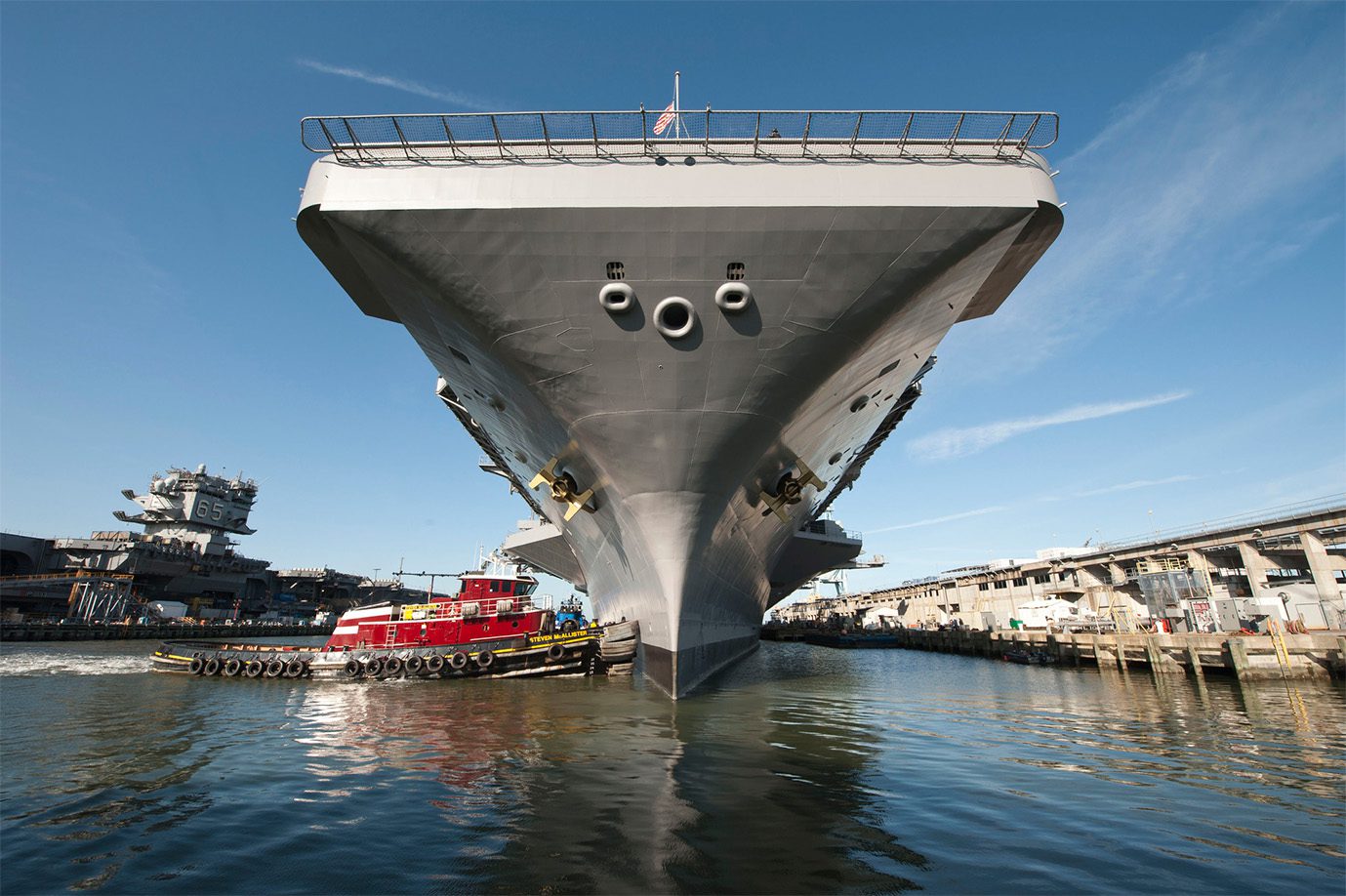Norfolk Naval Shipyard
The Norfolk Naval Shipyard is a U.S. Naval facility located in Virginia that specializes in repairing, overhauling, and modernizing ships and submarines. Asbestos, once commonly used in shipbuilding due to its fire-resistant composition, was used in insulation, pipes, and other materials within shipyards. Prolonged exposure to airborne asbestos fibers during maintenance or repair work at places like the Norfolk Naval Shipyard has been linked to increased risks of lung cancer, mesothelioma, and other respiratory diseases among shipyard workers and military personnel.

History of Asbestos Use at Norfolk Naval Shipyard
Nestled along the Elizabeth River in Portsmouth, Virginia, adjacent to Norfolk, lies the Norfolk Naval Shipyard. The historic shipyard began operation in 1767 and has provided crucial ship construction, repair, and maintenance services during multiple wars and major historical events. It is still in use today, standing as the Navy’s oldest and largest industrial facility.
Asbestos is a naturally occurring mineral that was used across the United States as a heat-resistant and fireproof element for insulation products. Throughout the 20th century, asbestos became a common element in materials used by military in shipyards. The Norfolk Naval Shipyard reached its peak during WWII, employing over 40,000 personnel who worked on 6,850 ship repairs. During this process, nearby landfills were inadvertently polluted with hazardous asbestos waste.
Over time, the widespread asbestos use led to numerous shipyard workers facing severe health issues such as lung cancer, mesothelioma, and asbestosis. Despite regulations introduced in the 1970s to curb its usage, the handling of asbestos persisted during ship overhauls, furthering health risks among the workers.
Asbestos Exposure at Norfolk Naval Shipyard
Military asbestos use was prevalent in insulating protective gear, serving as a key component in gloves, suits, masks, and other safety equipment. Beyond personal protective gear, ships contained asbestos in pipes, gaskets, and other components. Moreover, it played a role in coatings and sealants, effectively enhancing structural integrity.
While serving as a seemingly essential component of these materials, exposure to microscopic asbestos fibers increased health risks among workers and anyone in proximity to these materials. When disturbed, asbestos fibers disperse into the air, potentially settling on surfaces such as the ground or water, and when inhaled, can lodge within a person’s lungs. Norfolk Naval Shipyard lacked a waste treatment facility for much of its operational history. Asbestos and other toxins were not disposed of properly and were often thrown on the ground. The negligent handling of asbestos at Norfolk Naval Shipyard increased the risk of health complications to both shipyard workers and nearby communities.
In 1999, the Environmental Protection Agency (EPA) recognized the impact of industrial waste generated from shipyard activities and listed the shipyard on its National Priorities List. This acknowledgment resulted from contamination found in 500 acres of surrounding grounds and waterways, notably the Elizabeth River, by asbestos, metal scraps, oils, and other chemicals. The soil contamination has since been cleaned up by the Navy.
Norfolk Naval Shipyard Workers and Asbestos Risks
In 1942, the Norfolk Naval Shipyard achieved a milestone by completing its eighth and final dry dock. The major expansion doubled the physical size of the facility, increasing its production capacity. As a result, the shipyard experienced a surge in employment to accommodate a greater number of vessels.
Certain jobs involving the direct handling of asbestos elevate the risk of health complications. During maintenance, renovation, and demolition work on ships, various occupations came into contact with the toxin, including:
- Insulation installation and removal: Were responsible for installing insulation materials containing asbestos in pipes and boilers.
- Pipefitting: Installed, repaired, and maintained piping systems, often working with asbestos-containing insulation materials and pipe coverings.
- Welding: While welding, workers often encountered asbestos-containing materials used in coatings, sealants, and insulation around metal joints.
- Electrical work: Working with wiring and electrical systems often led to asbestos exposure.
- Shipfitters: Involved in shaping and assembling metal parts for ships.
After WWII, Norfolk Naval Shipyard focused less on ship construction and more on the overhaul and repair of vessels. Repair and modernization services at the shipyard commonly occurred on amphibious vessels, submarines, guided-missile cruisers, and supercarriers. Notable vessels, including aircraft carriers USS Enterprise and USS Eisenhower, saw action from WWII to the Cold War and underwent significant overhauls and repairs at this shipyard.
Veterans who were diagnosed with mesothelioma may be eligible for VA compensation. To find out if you qualify, speak with a patient advocate today.

Virginia Mesothelioma Lawyer for Shipyard Workers
We understand the immense challenges you may face in coping with the diagnosis of an asbestos-related disease. Your health and well-being matter, and taking legal action against those responsible for your exposure at Norfolk Naval Shipyard can secure the compensation you deserve to cover medical expenses and provide financial security for you and your family.
Illnesses like mesothelioma demand comprehensive care and legal guidance to navigate the complexities of holding responsible parties accountable for your suffering. If you or a loved one have been diagnosed with mesothelioma or any asbestos-related disease in Virginia, our dedicated legal team is here to help. We have access to an extensive network of experienced attorneys who specialize in handling cases specific to Virginia’s laws and regulations, ensuring you receive personalized attention and the justice you deserve.
Take the first step toward seeking justice by contacting us for a case evaluation. Our team is ready to offer compassionate guidance, legal resources, and expertise tailored to your situation and location in Virginia.


